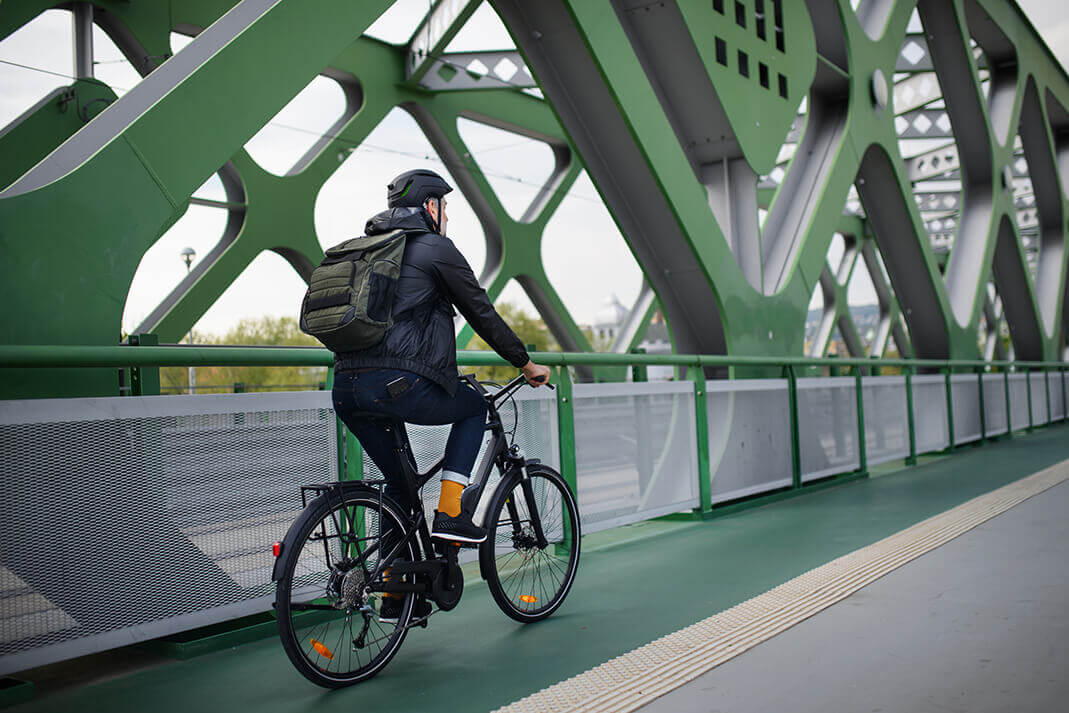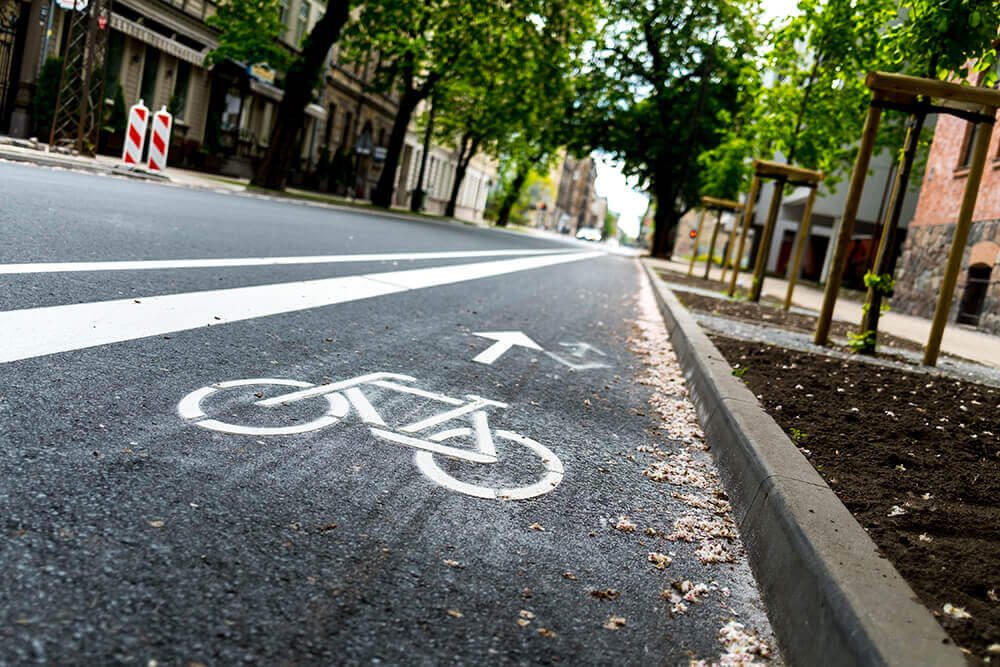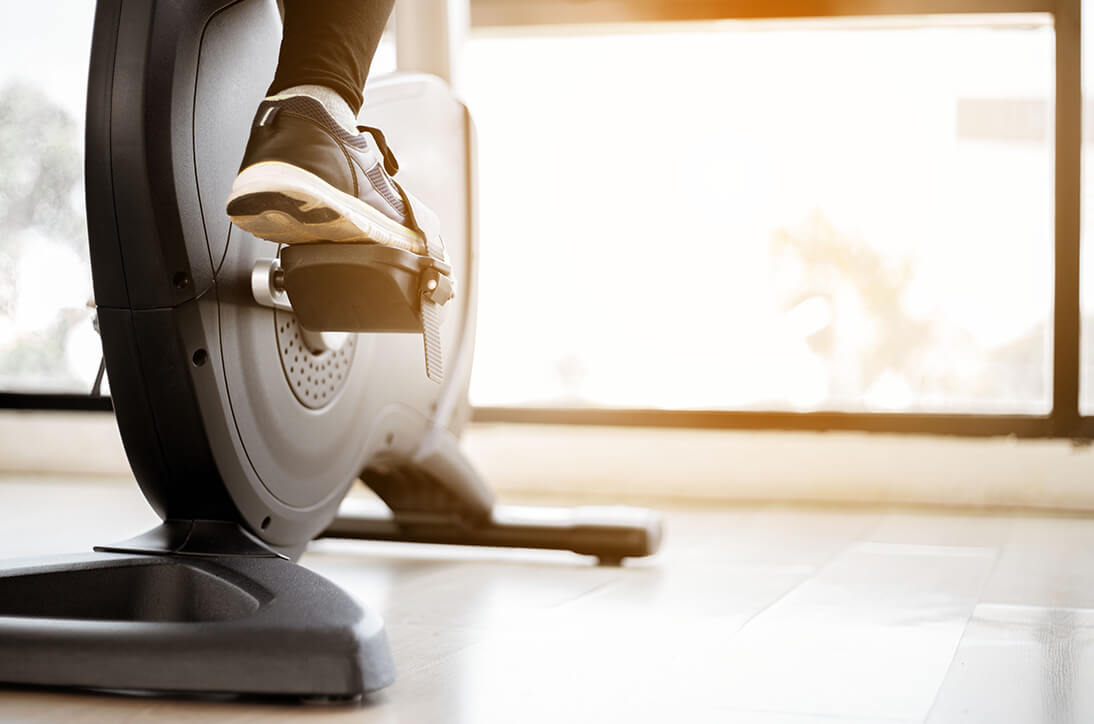Why choose commuter biking? This guide delivers clear steps to enhance your ride to work, from selecting the right bike to navigating traffic with ease. Gain essential commuter biking insights on preparation, maintenance, and blended transit options to make your daily trip efficient. Plus, we unveil how this eco-friendly choice positively impacts your health and finances.
Key Takeaways
- Pick a bike that suits your commute by factoring in terrain, distance, comfort, and cargo needs—with electric bikes being a top choice for ease and longer distances.
- Gear up with essentials like a helmet, lights, a wireless charging phone case and mount, a lock, and weather-appropriate clothing, and follow traffic rules and signals to ensure a safe journey.
- Maximize your commuting efficiency through route planning using tools like Google Maps and combine biking with public transport when needed, while keeping up with regular bike maintenance.
Choosing the Right Bike for Your Commute

The journey of bike commuting begins with the selection of the perfect bike. Consider factors such as:
-
the ground you’ll be biking on
-
how far you have to go
-
what feels comfy for you to ride
-
how much stuff you need to take with you
What if this is your first time buying a bike? No worries. We offer valuable tips that will guide you in choosing the right bike for commuting.
Road, Mountain, or Electric?
The type of bike you choose greatly influences your commuting experience. Road bikes are low-maintenance and budget-friendly, ideal for daily commutes. Mountain bikes, with wider tires and hydraulic disc brakes, provide stability and comfort, especially on challenging terrains.
Now, if you’re looking for speed and convenience, electric bikes are your best bet. They come with pedal assist that helps you go faster with less effort and are perfect for longer trips or carrying a heavy load. An electric bike offers the same benefits, making it a popular choice among commuters and recreational riders alike.
Adjusting Your Bike to Fit
Once you’ve chosen your bike, it’s important to ensure it fits you properly for a comfortable commute. The right bike frame size improves your pedaling efficiency and handling, while wrong size can lead to discomfort and less efficient pedaling. Additionally, your hand and handlebar positioning should allow your hands to rest comfortably without feeling too stretched out or squished.
Remember, a well-adjusted bike will make your bike stable and comfortable for your commute, bike specifically, ensuring a smooth ride home.
Preparing for the Daily Journey

With your bike ready, it’s time to prepare for your daily commute. Being well-prepared makes all the difference in bike commuting. From packing the right gear to weather-proofing your ride, there are several things you can do to ensure a smooth and safe commute.
Essential Gear Checklist
To begin with, equip yourself with all the necessary gear for a safe and enjoyable commute. This includes:
-
A helmet
-
Front and rear lights, with additional rear lights for increased visibility
-
A wireless charging phone case and handlebar mount
-
A bike lock
-
A cycling backpack or panniers
-
Repair essentials like a multi-tool, spare inner tube, tyre levers, and mini pump
If you’re planning on carrying work clothes or other items, a good cycling-specific backpack will provide comfort and security.
Weather-Proofing Your Ride
Given the unpredictability of weather, being prepared for all conditions is crucial. Here are some tips for wet weather:
-
Invest in water-resistant jackets and waterproof accessories to keep you dry.
-
If you’re riding in the rain, remember to use bike lights for visibility.
-
Be careful of slippery roads.
For snowy conditions, clean your bike after every ride to prevent damage and use a cover to shield it from the elements.
Navigating Safely: Rules and Etiquette

Knowledge of rules and etiquette is a must for both the rider and other road users when it comes to urban biking. Staying visible, using hand signals, and being respectful in bike lanes are just a few ways to ensure a safe and pleasant commute.
Mastering Urban Traffic
For new bike commuters, weaving through city traffic can be quite intimidating. But don’t worry, with a little practice and a few top tips, you’ll be zipping through the streets like a pro. Here are some important tips to keep in mind for your safety:
- Keep in the right position on the road
- Make sure other drivers can see you
- Use hand signals
- Stay focused
- Be confident
Also, don’t forget your safety gear, and always be aware of your surroundings.
Sharing the Road
Bike commuting entails sharing the road with other cyclists, pedestrians, and vehicles. Here are some tips to keep in mind:
- Always give way to cars and pedestrians and keep a safe distance when overtaking.
- When sharing the road with trucks and buses, ensure you’re visible and give them plenty of room.
- Don’t forget to use hand signals to communicate your intentions to other road users.
Maximizing Your Commute Efficiency

Efficiency plays a major role in bike commuting. Whether it’s optimizing your route or combining biking with public transportation, there are several bike commuting tips to make your commute faster and more efficient.
Route Planning with Google Maps
Effectively planning your route can enhance your commuting efficiency. Google Maps is a great tool for this, providing bike-friendly transit lines and routes. It even offers directions for docked bikeshare in certain cities and updates on road conditions to avoid traffic.
Keep in mind that Google Maps’ estimated arrival times can vary based on your actual riding speed and potential delays at intersections.
Finding the Perfect Accessory for your Ride
If you are going to be using your phone to plan your route with Google Maps, be sure to use a wireless charging phone case and mount so you can keep your phone fully charged and within view on your rides. A phone charging case is also a great idea if you plan to use your phone to listen to music or use apps like Strava. StrideCharge is the perfect accessory to mount your phone to your handlebars and wireless charge it.
Combining Biking with Public Transport
A combination of biking and public transportation can make your commute more convenient and flexible. Consider:
- Biking to a park and ride or a bikeshare station and then hopping on a train, bus, or tram.
- Using apps like Transit+ or Google Maps to help you plan these combined commutes effectively.
- Checking the rules for bringing bikes on public transport in your area.
Maintaining Your Bike and Gear

For a safe and enjoyable commuting experience, it’s vital to maintain your bike and gear. Regular safety checks and proper care can keep your bike in top condition and extend its lifespan.
Routine Safety Checks
A safety check on your bike before every ride is a good practice. You should check the following components as part of your maintenance routine:
- Tire pressure
- Brakes
- Wheel quick-release levers
- Crank arms
- Pedals
- Stem
- Headset
- Chain
It’s important to ensure that all components are in good working condition. By doing this, you can catch potential issues early and prevent them from turning into bigger problems. Check out The Ultimate Guide to Biking Accessories
When to Visit Your Local Bike Shop
While you should maintain your bike regularly at home, there are times when you might need professional assistance. If you notice rust, hear squeaking, or have trouble with the chain, it may be time to visit your local bike shop.
Generally, getting a professional service every six to eighteen months is recommended, but this can vary depending on how often and where you ride.
The Health and Financial Benefits of Biking to Work
Bike commuting goes beyond simply getting you to work. It’s an opportunity for daily exercise, a chance to save money, and a step towards reducing your carbon footprint. In addition, it can be a fun bike play for those who enjoy a bike ride.
Fitness Gains from Daily Rides
Replacing your car or bus ride with a bike commute can significantly boost your fitness. Regular cycling can help lower the risk of heart problems and strengthen your cardiovascular system. Plus, it’s a great way to burn calories and lose weight.
Saving Money on Commuting Costs
In addition, commuting by bike can be a great way to save money. With the average annual cost of owning a car at over $12,000, opting for a bike commute can save you hundreds or even thousands of dollars every year. And while a new bike can cost a few hundred dollars, the maintenance cost is significantly lower compared to a car.
Summary
In conclusion, bike commuting is not only a fun and efficient way to get to work, but it also offers numerous health and financial benefits. From choosing the right bike and preparing for your daily journey to navigating safely and maintaining your bike, there’s a lot to consider. But with the right preparation and mindset, you’ll be pedaling your way to a healthier, greener, and more enjoyable commute in no time.
Frequently Asked Questions
What is meant by commuter bike?
A commuter bike is designed for frequent rides through city traffic at moderate speeds, prioritizing functionality, simplicity, and durability. It is meant to withstand the demands of daily commuting.
Is a 30 minute bike commute too long?
No, if you can handle the ride, go for it! You'll get extra training time each week without feeling too fatigued.
What is the best type of bike for commuting?
The best type of bike for commuting depends on your specific needs and preferences. Road bikes are low-maintenance and budget-friendly, while mountain bikes offer stability and comfort, and electric bikes provide speed and convenience.
How can I prepare for a smooth and safe bike commute?
To prepare for a smooth and safe bike commute, be sure to do regular safety checks, carry the right gear, and weather-proof your ride. This will help make your commute safer and more enjoyable.
How can I navigate safely through busy city traffic?
Make sure to stay visible, use hand signals, and respect other road users to navigate safely through busy city traffic.




Leave a comment
This site is protected by reCAPTCHA and the Google Privacy Policy and Terms of Service apply.